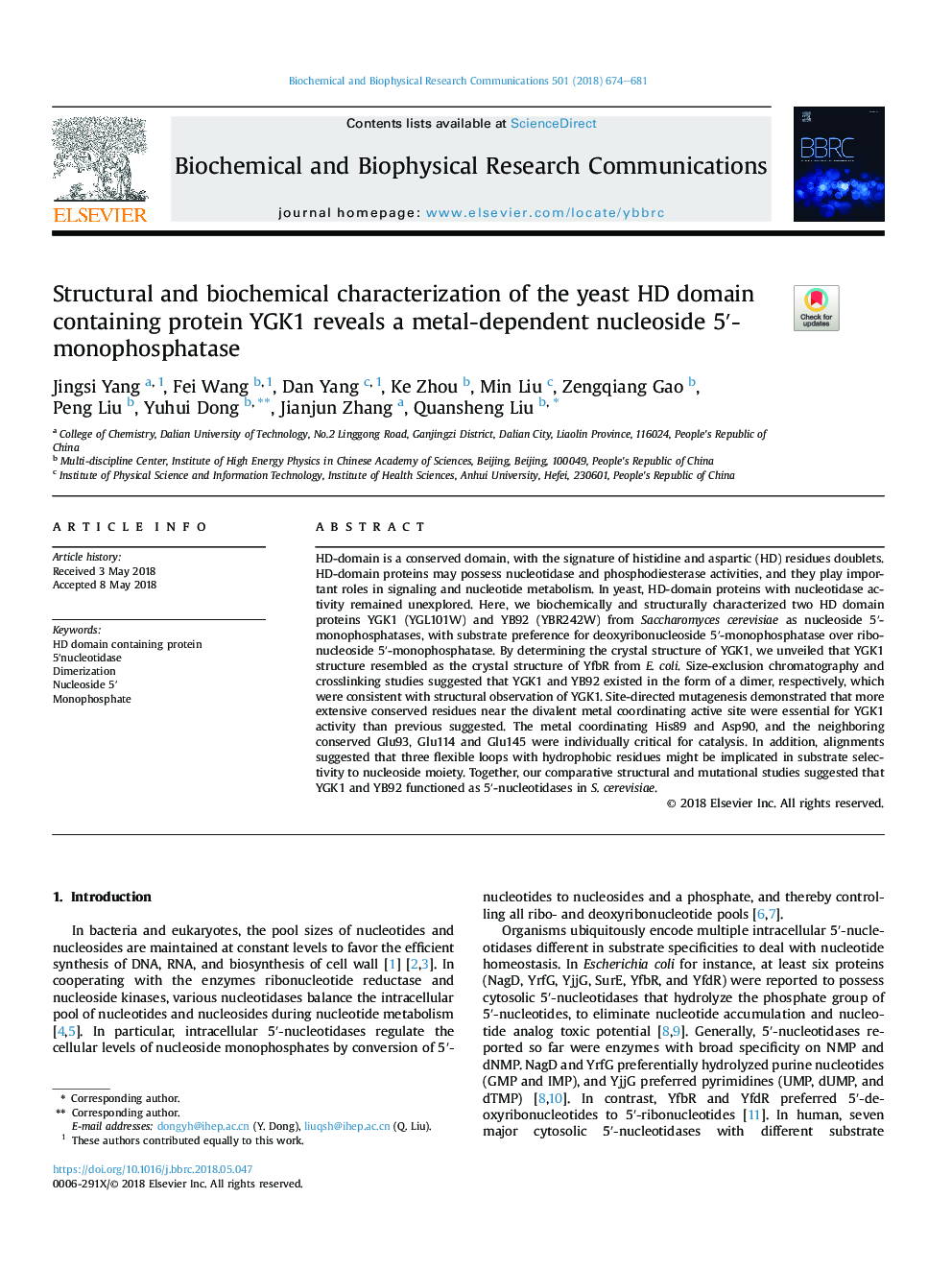| Article ID | Journal | Published Year | Pages | File Type |
|---|---|---|---|---|
| 8292519 | Biochemical and Biophysical Research Communications | 2018 | 8 Pages |
Abstract
HD-domain is a conserved domain, with the signature of histidine and aspartic (HD) residues doublets. HD-domain proteins may possess nucleotidase and phosphodiesterase activities, and they play important roles in signaling and nucleotide metabolism. In yeast, HD-domain proteins with nucleotidase activity remained unexplored. Here, we biochemically and structurally characterized two HD domain proteins YGK1 (YGL101W) and YB92 (YBR242W) from Saccharomyces cerevisiae as nucleoside 5ʹ-monophosphatases, with substrate preference for deoxyribonucleoside 5ʹ-monophosphatase over ribonucleoside 5ʹ-monophosphatase. By determining the crystal structure of YGK1, we unveiled that YGK1 structure resembled as the crystal structure of YfbR from E. coli. Size-exclusion chromatography and crosslinking studies suggested that YGK1 and YB92 existed in the form of a dimer, respectively, which were consistent with structural observation of YGK1. Site-directed mutagenesis demonstrated that more extensive conserved residues near the divalent metal coordinating active site were essential for YGK1 activity than previous suggested. The metal coordinating His89 and Asp90, and the neighboring conserved Glu93, Glu114 and Glu145 were individually critical for catalysis. In addition, alignments suggested that three flexible loops with hydrophobic residues might be implicated in substrate selectivity to nucleoside moiety. Together, our comparative structural and mutational studies suggested that YGK1 and YB92 functioned as 5ʹ-nucleotidases in S. cerevisiae.
Keywords
Related Topics
Life Sciences
Biochemistry, Genetics and Molecular Biology
Biochemistry
Authors
Jingsi Yang, Fei Wang, Dan Yang, Ke Zhou, Min Liu, Zengqiang Gao, Peng Liu, Yuhui Dong, Jianjun Zhang, Quansheng Liu,
